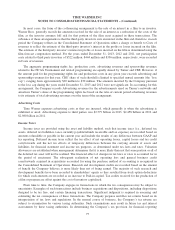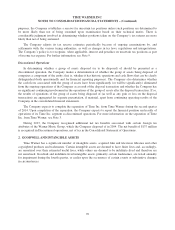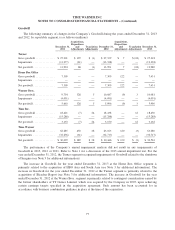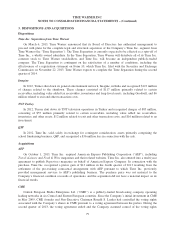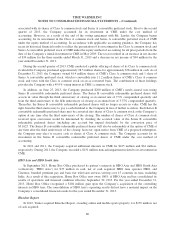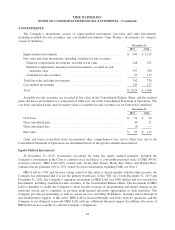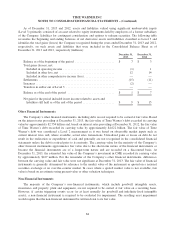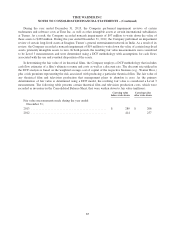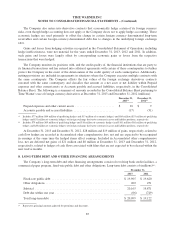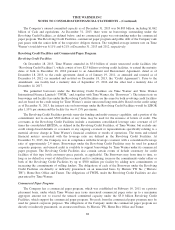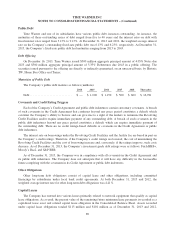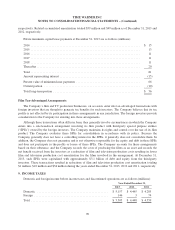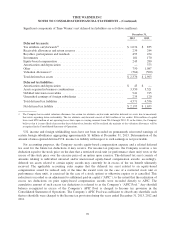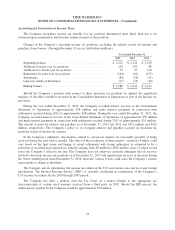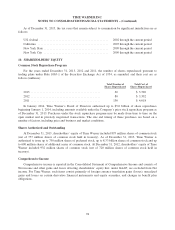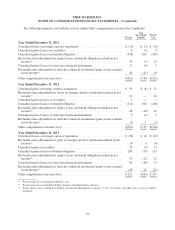Time Magazine 2013 Annual Report Download - page 101
Download and view the complete annual report
Please find page 101 of the 2013 Time Magazine annual report below. You can navigate through the pages in the report by either clicking on the pages listed below, or by using the keyword search tool below to find specific information within the annual report.
TIME WARNER INC.
NOTES TO CONSOLIDATED FINANCIAL STATEMENTS – (Continued)
During the year ended December 31, 2013, the Company performed impairment reviews of certain
tradenames and software costs at Time Inc. as well as other intangible assets at certain international subsidiaries
at Turner. As a result, the Company recorded noncash impairments of $97 million to write down the value of
these assets to $492 million. During the year ended December 31, 2012, the Company performed an impairment
review of certain long-lived assets at Imagine, Turner’s general entertainment network in India. As a result of its
review, the Company recorded a noncash impairment of $19 million to write down the value of certain long-lived
assets, primarily intangible assets, to zero. In both periods, the resulting fair value measurements were considered
to be Level 3 measurements and were determined using a DCF methodology with assumptions for cash flows
associated with the use and eventual disposition of the assets.
In determining the fair value of its theatrical films, the Company employs a DCF methodology that includes
cash flow estimates of a film’s ultimate revenue and costs as well as a discount rate. The discount rate utilized in
the DCF analysis is based on the weighted average cost of capital of the respective business (e.g., Warner Bros.)
plus a risk premium representing the risk associated with producing a particular theatrical film. The fair value of
any theatrical film and television production that management plans to abandon is zero. As the primary
determination of fair value is determined using a DCF model, the resulting fair value is considered a Level 3
measurement. The following table presents certain theatrical film and television production costs, which were
recorded as inventory in the Consolidated Balance Sheet, that were written down to fair value (millions):
Carrying value
before write down
Carrying value
after write down
Fair value measurements made during the year ended
December 31,:
2013 .................................................. $ 289 $ 206
2012 .................................................. 414 257
85


